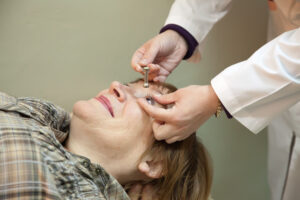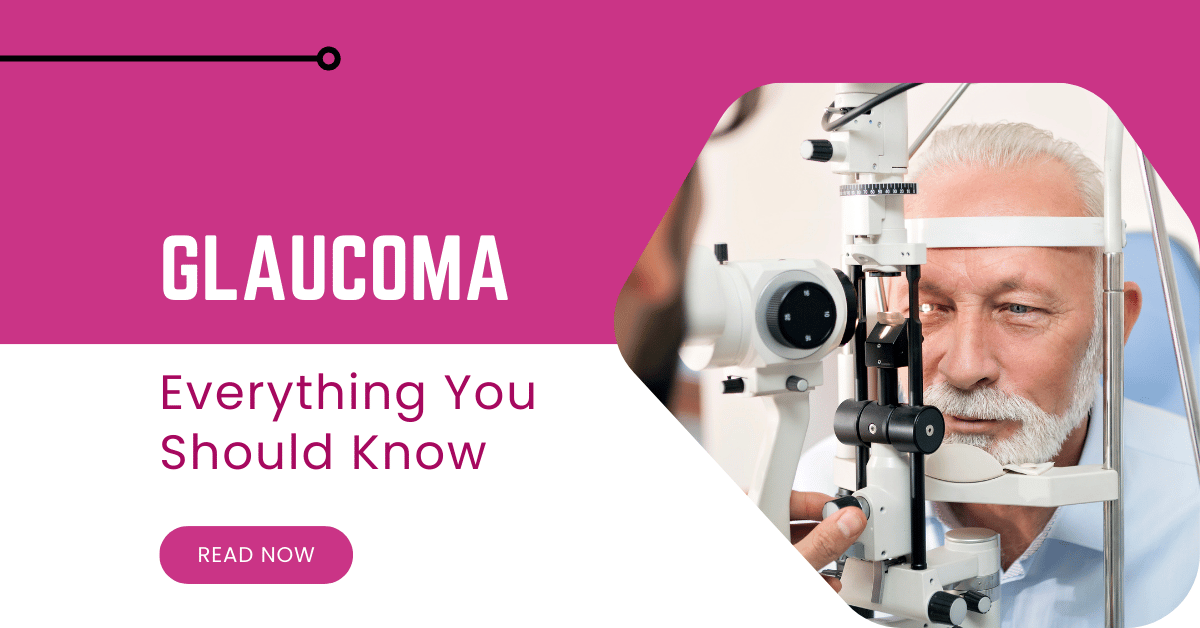Introduction
Glaucoma is a serious eye condition that can lead to permanent vision loss if left untreated. Often referred to as the “silent thief of sight,” it develops gradually and may not show symptoms until significant damage has occurred. Understanding glaucoma is crucial for early detection and effective management. In this blog, we will explore what glaucoma is, its causes and symptoms, available treatments, and expert recommendations to help safeguard your vision.
What is Glaucoma?
Glaucoma is a group of eye diseases that damage the optic nerve, the crucial link between the eye and the brain. This damage is often caused by increased intraocular pressure (IOP), though normal-tension glaucoma can occur even when IOP is within normal limits. The most common types of glaucoma include:
- Open-Angle Glaucoma: The most prevalent form, where fluid drainage is slow, leading to gradual pressure buildup.
- Angle-Closure Glaucoma: A more sudden condition where drainage channels become blocked, requiring immediate medical attention.
- Normal-Tension Glaucoma: Optic nerve damage occurs despite normal eye pressure, highlighting the role of other risk factors.
- Congenital Glaucoma: A rare, inherited form that affects infants due to developmental issues in the eye’s drainage system.
Causes and Symptoms of Glaucoma
Causes
Glaucoma can develop due to several factors, including:
- Elevated intraocular pressure (IOP): The leading cause of optic nerve damage.
- Genetics: Family history significantly increases risk.
- Age: Common in individuals over 40, with increasing risk as one ages.
- Medical Conditions: Diabetes, hypertension, and cardiovascular diseases contribute to glaucoma development.
- Eye Injuries and Medications: Previous trauma or prolonged steroid use can elevate IOP.
Symptoms
Glaucoma is often asymptomatic in its early stages, making regular eye exams essential. However, as the condition progresses, symptoms may include:
- Gradual vision loss (starting with peripheral vision)
- Blurred or tunnel vision
- Severe eye pain (in angle-closure glaucoma)
- Headaches and nausea
- Halos around lights
Treatment Options for Glaucoma
1. Medications
Prescription eye drops, such as prostaglandin analogs and beta-blockers, are commonly used to lower eye pressure. These medications either reduce fluid production or improve drainage.
2. Laser Therapy
- Selective Laser Trabeculoplasty (SLT): Improves fluid drainage in open-angle glaucoma.
- Laser Peripheral Iridotomy (LPI): Creates a small hole in the iris to relieve pressure in angle-closure glaucoma.
3. Surgical Procedures
- Trabeculectomy: Creates a new drainage pathway for excess fluid.
- Glaucoma Drainage Implants: Small devices are inserted to help regulate intraocular pressure.
- Minimally Invasive Glaucoma Surgery (MIGS): A less invasive approach that reduces eye pressure with fewer complications.
4. Lifestyle and Preventative Measures
- Regular eye check-ups for early detection
- Maintaining a healthy diet rich in antioxidants
- Managing underlying health conditions like diabetes and hypertension
- Avoiding smoking and excessive caffeine intake

Meet Dr. Smita Mukherjee
Dr. Smita Mukherjee is a senior ophthalmologist with over 30 years of experience in diagnosing and treating eye diseases, including glaucoma. After completing her post-graduation with academic honors from Seth G.S. Medical College, she joined the faculty, where she trained numerous postgraduate students. Since 1997, she has been practicing privately at Oculus Eye Clinic, Sanpada, and Eye Solutions Clinic, Chembur. Her expertise includes Cataract, Phacoemulsification, Refractive Errors, Diabetic Retinopathy, and Age-Related Macular Degeneration.
Clinic Location & Contact: Eye Solutions Clinic 401, Pearl Belleza, D. K. Sandu Marg, 19th Road Corner, Chembur, Mumbai 400071
For appointments, visit the clinic or contact us for consultation.
FAQs About Glaucoma
1. Can glaucoma be cured? No, but it can be managed effectively with early detection and treatment.
2. How often should I get my eyes checked? Adults over 40 should have an eye exam every 1-2 years, or more frequently if they are at risk.
3. Is glaucoma hereditary? Yes, a family history of glaucoma increases your risk significantly.
4. What is the most common type of glaucoma? Open-angle glaucoma is the most common form, often developing slowly over time.
5. Does glaucoma always cause blindness? Not necessarily. Early diagnosis and treatment can prevent significant vision loss.
6. Are there natural remedies for glaucoma? While a healthy lifestyle can help, medical treatment is necessary to manage the condition.
7. Can I wear contact lenses if I have glaucoma? Yes, but you must follow your doctor’s advice, as some medications may affect lens comfort.
8. Does using the computer worsen glaucoma? No, but prolonged screen time can cause eye strain. Taking regular breaks is recommended.
Conclusion
Glaucoma is a serious yet manageable condition with early detection and appropriate treatment. Regular eye exams, awareness of symptoms, and consulting an expert like Dr. Smita Mukherjee can help protect your vision. Don’t ignore your eye health—schedule a check-up today to ensure a lifetime of clear sight!



